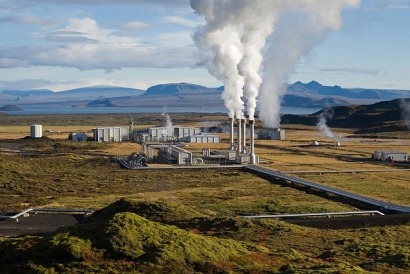
Renewable energy service providers and plant manufacturers are finding ways to cut costs without sacrificing energy output or efficiency. Geothermal energy could be a forerunner in renewable energy adoption if the sector rebrands its image to a more accessible investment.
The clean energy revolution includes millions of households putting solar panels on rooftops and geothermal infrastructure in retrofitted builds. Many want the benefits of clean energy, like the sweet tax credits, energy bill reduction and positive environmental impact. However, countless consumers don’t or can’t invest time and resources into optimizing the household before installation.
When someone calls for a geothermal quote, an inspection could reveal a higher price tag than anticipated because of the home’s specifications. How can professionals in the industry — from distributors to maintenance workers — spread helpful information to empower buyers?
These are the most significant factors in determining the price of a complete geothermal outfit in a standard household:
Reduce energy consumption
Geothermal energy adoption — like all other renewables — is a collaborative effort between corporations and individuals, making them so exhilarating for the energy industry. It requires experts to help with a cultural mindset shift to encourage and inspire consumers to make an effort to adjust their energy habits if they want swift, affordable geothermal energy prices.
Let’s look outside the homeowner into the builders, contractors, managers and rest of the participants in the renewable energy industry responsible for installation. They also have a job to do before putting in the heat pumps, and that’s reevaluating their building process to make the prices more approachable. These questions could reveal significant findings for process discovery and improvement:
The Department of Energy invested in Enhanced Geothermal Systems (EGS) research and development to reduce costs to $45 per megawatt hour by 2035. Research can help, but geothermal power plants need funds to help lower regulatory overhead, like permitting.
Geothermal permits are complex and arduous to obtain, especially when there’s a lack of standardization. The process resembles oil and gas permitting, which highlights necessary regulatory changes that need to happen to make the process more particular to geothermal needs.
Those in charge of government policy arguably have the most significant impact on the cost of geothermal energy. They can propose ideas that lead to tax incentives or grant programs on local and federal levels. Despite the investment, these actions demonstrate a desire for the community to garner interest in renewables. Citizen buy-in is more likely if they know there is government backing behind a project.
Contractors and geothermal installers can research the most up-to-date policies around the state and nation to educate customers seeking quotes. The current federal tax credit in the U.S. is 30% for installations made before January 1, 2033, changing to 26% and 22% in 2034 and 2035, respectively. State-specific credits will vary, but customers can look into the Database of State Incentives for Renewables and Efficiency for more information.
Everyone from homeowners to company managers to government representatives can advocate for legislation that supports cheaper geothermal energy. One of the best ways to do this is by proving to businesses and governments that renewables are more reliable and inexpensive than fossil fuels, which are experiencing chaotic price fluctuations due to scarcity, trade struggles, international conflict, and competition. Successful advocacy can’t happen without evidence, and the best way to win is by showing the data.
Geothermal providers can assist citizens by offering as many realistic financing options as possible. Quantity isn’t the only aspect that matters — they have to be easy to understand with no easy-to-miss fine print. Transparency will keep customers interested in the product, despite the cost of geothermal energy.
Installers can clarify what plan is a loan or rental, what interest rates they can expect and how long contracts are — though it can depend on the bank. Companies could simplify the process by automating the incorporation of eligible tax credits into quotes or publicizing grant or assistance programs.
The cost of geothermal can only decrease by looking at the macro perspective. How are humans building geothermal plants and extracting geothermal energy? How many dollars and resources go into it that would otherwise fall on customers?
It’s not cheap to get the heat out of the Earth, especially when geothermal wells are prone to corroding and emitting a lot of carbon dioxide. Sellers often justify prices, saying the clean energy will pay for itself in around a decade. But how can R&D into new drilling technologies help customers with upfront costs?
Many modern technologies can’t withstand the force of drilling thousands of feet below the surface. Workforces need more resilient drills that damage environments less for the future of geothermal. More efficient drills and habitat monitoring systems that require less maintenance will inevitably cut costs.
How many households worldwide would adopt geothermal energy if it could be known for its affordable reputation? Everyone from venture capitalists funding geothermal tech to contractors putting the systems in people’s walls can help pave the way for a more practical reality for geothermal.
Reducing the cost of geothermal requires widespread knowledge, governmental incentives and corporate adjustments — adding up to a cleaner future.

